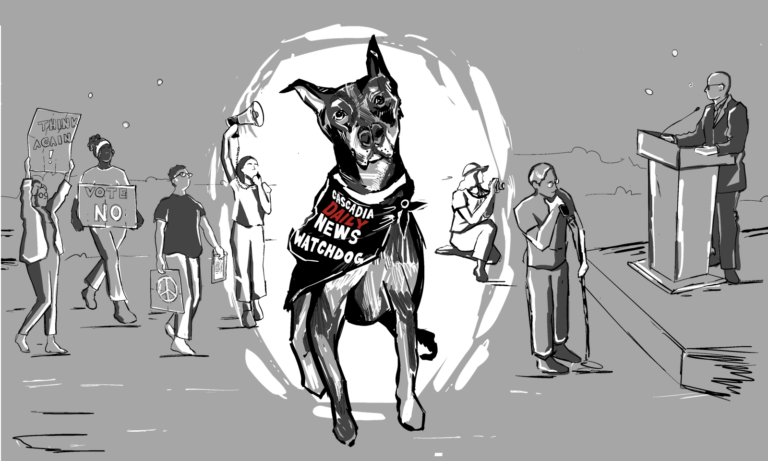Along the banks of Whatcom Creek, 500 feet from Derby Pond, volunteers dug, pulled and cut invasive Himalayan blackberries out of the ground. They’d been instructed to find the five-leaved plant with thick thorns that grew near the ground. If they stumbled across a native Salmonberry plant, typically more delicate with a woody stalk, they were to leave it be.

The four work parties, part of the Bellingham Parks Volunteer Program, marked the first event of six to commemorate the 25th anniversary of the Olympic Pipeline Tragedy, when 230,000 gallons of gasoline pumped into Whatcom Creek and ignited, causing a fireball that killed two boys, Stephen Tsiorvas and Wade King, and a young man, Liam Wood.
The area decimated by the fire has been continuously restored since 1999. On Saturday, June 1, while volunteers worked upriver from where the gasoline explosion occurred, some noted that further downstream, it was difficult to tell there had been such a cataclysmic event.
After nearly three hours of work — including piling the blackberry stalks, horsetails and reed canary grass into the flatbed of a large truck and placing mulch in the area — volunteers, ranging from children and college students to older adults, gathered to reflect on the explosion’s aftermath.
“I think Bellingham deserves to know this is a part of our history,” Bruce Brabec, Liam Woods’ stepfather, told volunteers.

He added that even though the upcoming week will be filled with sorrow when reflecting on the lives and nature lost, it also serves to continue the work groups like Pipeline Safety Trust (PST) and the Nooksack Salmon Enhancement Association (NSEA) have done in the last 25 years.
PST — the only national pipeline safety organization — was established in Bellingham after the pipeline explosion and funded from the criminal settlement paid by the Olympic Pipe Line Company.
“Pipeline Safety Trust has worked to make sure that no community has to experience what happened here in Bellingham,” said Kenneth Clarkson, the PST communications director.
PST had a tent with replicas of signs that will be unveiled during a ceremony at Whatcom Falls Park on Monday, June 10. The signs tell the story of what happened on June 10, 1999, and the damage caused.
Brabec and Marlene Robinson, Liam’s mother, joined volunteers getting muddy while removing blackberry bushes. Robinson and Liam used to volunteer with NSEA, and after Liam’s death, Robinson was heavily involved in restoring the habitat that was destroyed.

Robinson said the park looked like it had before the explosion and was now a healthy forest.
“I think if you look closely down in the burn area, you’ll still see burned remnants of trees,” Brabec said. “And I don’t mind that because, again, that’s part of the history.
“The work that was necessary to restore it has happened,” he said. “It’s really a place for people to come experience nature in a good way, not just remembering a tragedy.”
As volunteers packed up for the day, Robinson looked over at two boys fishing in Derby Pond with their father. Liam, 18 at the time, was out fishing in Whatcom Creek the day he was killed in the explosion.
“That’s exactly what Liam did and they’re having a good time,” she said. “They’ll keep this in their memories forever.”
Annie Todd is CDN’s criminal justice/enterprise reporter; reach her at annietodd@cascadiadaily.com; 360-922-3090 ext. 130.




